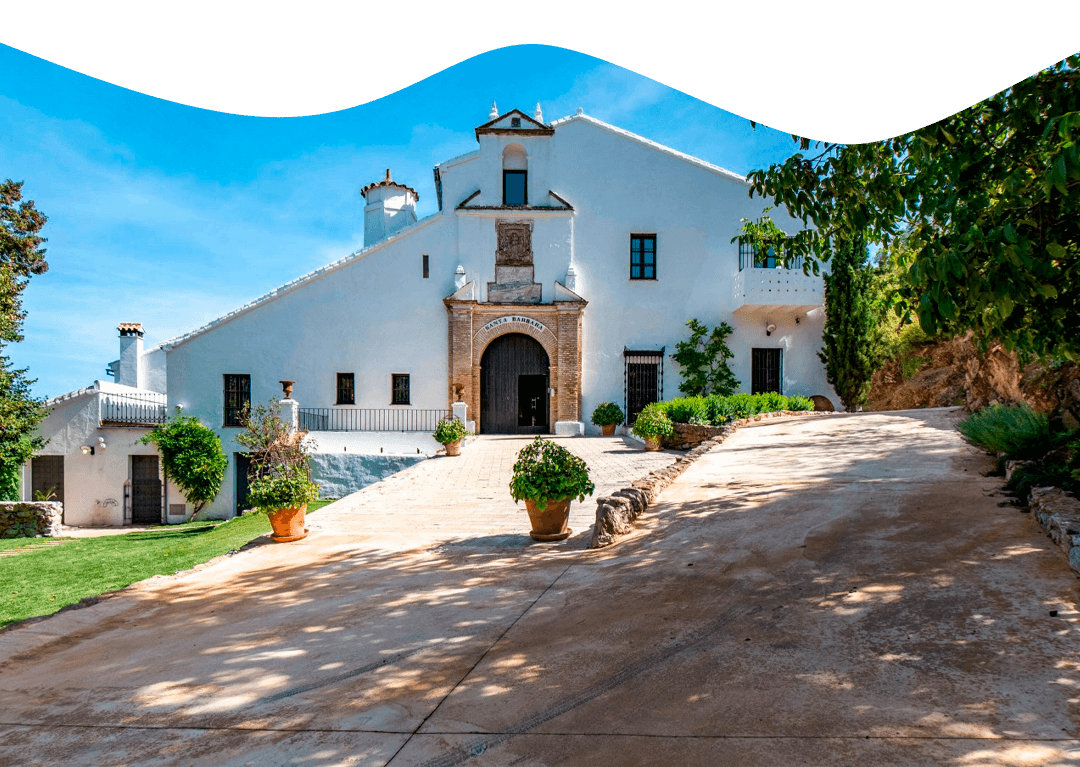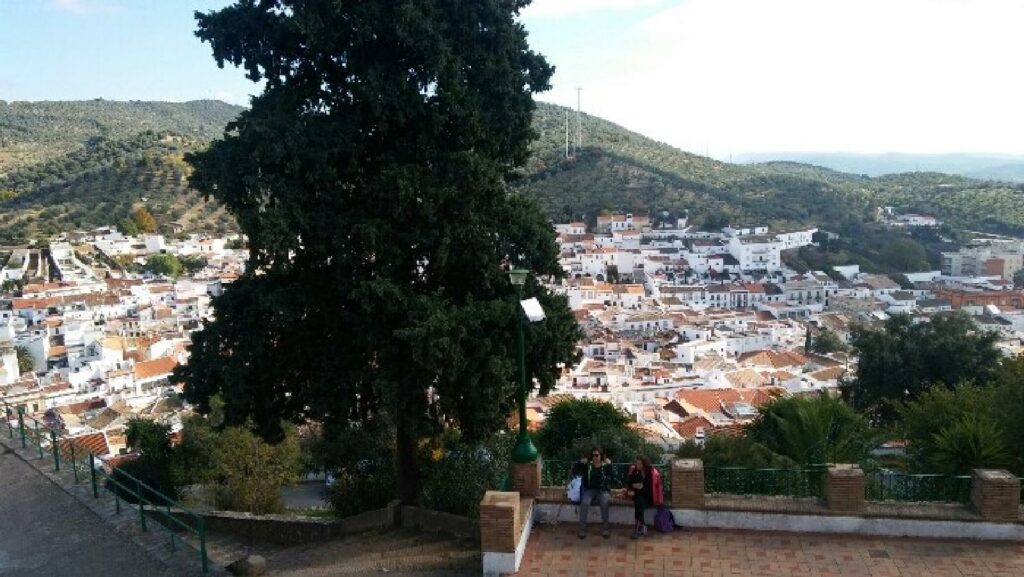


There is an unrivalled variety of routes to follow in Constantina. This place, characterised by its white houses, mansions and castle, proclaimed a cultural asset in 1985, has a lot to offer visitors.
It is ideal for open-air sports, group excursions, as well as for learning about its history. It is a natural enclave in the Sierra Park in the north of Seville, Spain. The present town is built near the fortifications erected by the Romans, whose name, Constantina Julia, is in honour of Julius Caesar.
It later became important because of the Emerita road that connected Merida and Seville. Another interesting fact is that Cocolubis, a famous wine exported from the port of Seville, was produced here. Read on and find out more about this spectacular place!

Routes in Constantina include “Los Castañares”, “Molino del Corcho”, “La Jurdana” and “Monte del Hierro”. On the other side is the Alameda, full of people and with a lively atmosphere, and there are many more.
You can also visit Calle Mesones, next to the baroque Hospital San Juan de Dios de Sevilla. You will also see the Plaza del Sol, the Church of the Sacraments, the Church of the Immaculate Conception and the Baptismal Church. But there are also other trails. Discover them below.
Circular in appearance, this road starts in Venero Street
and as you ascend, you will come across dry rock walls bordered by farms. As well as forests of chestnut and elm trees of elegant bearing and fresh foliage.
After a kilometre and a half, there is a shortcut that makes the path shorter and where you can see cork oaks, gall oaks, oaks, oaks, oaks and olive trees. After almost 6 kilometres you reach the castle. There are 2 options: climb it to enjoy the beautiful view, or go to the starting point, towards the Plaza de Toros and the Alameda.
It is located in the direction of the Ermita de la Virgen del Robledo.
and the first 6 kilometres are on tarmac road. Finally, there is a long climb up to the viewpoint at the Puerto del Monte Negrillo pass.
Here we usually stop to enjoy the contrast of chestnut trees, holm oaks, cork oaks and oaks. The rest of the route follows a gently sloping overland path.
Afterwards, there is an old barite mine, today unexploited. To conclude, you reach the village of Monte del Hierro, which still maintains its streets as they were built at the end of the last century.
Another route to do in Constantina is that of “La Jurdana”, whose namesake comes from the estate that houses a spring fountain. It is a space that brings the visitor close to a native flora made up, on the one hand, of rockrose, sarsaparilla and pear trees, and on the other, of poplars and thermophilic plants.
The limestone formations, which are quite common in this region, can be seen all along the route, and the installations have a rich ethnographic content. The cavern of La Sima and the ruins of the Ermita de la Yedra have a particular uniqueness that speaks of local history and famous legends. The route can be done on foot, on horseback or by mountain bike.
Water, shade and abundant fauna are the main features of the route. The route starts in the area of Margarita Island, Riviera of Huesna, but you can also start from the train station on the Cazara-Constantina line.
It is one of the areas with the greatest ecological value. It has a magnificent gallery forest with impressive trees, alders, willows, ashes, poplars and bushes characteristic of the area. The fauna is also of great value, with a wide variety of birds and mammals such as otters. You can relax in the entertainment area before returning.

In Constantina you can findvillages such as San Nicolás del Puerto, El Pedroso, Cazalla De La Sierra and Las Navas de la Concepción. It is also home to the sanctuary of the Encarnación, the Plaza Española, the Palace of the Counts of Fuente, among others. Let’s take a look!
It is also recommended to go to the Carnival in February, Easter Week, the Feast of the Virgin of Robledo in August, or the Fair in the Alameda. The Romería de la Virgen, in September, and the Feria del Mosto y Productos Ibéricos, in November, are also very traditional.
In Constantina you can enjoy an admirable gastronomy based on meats, sausages and mushrooms.
If you are looking for something different, a good recommendation is the battered frogs’ legs, a local delicacy. The taverns, rotisseries, cured meats, wood-fired bread and fried potatoes are outstanding.
For dessert, there is nothing like the handmade chocolate nougat, made in the Monasterio de las Jerónimas. As well as the different bakeries, such as Valle de la Osa, in Calle Pablo Iglesias, where jams and marmalades are made.
Also classic are the aniseed and cherry liqueurs, whose distilleries are in the Sierra Morena, a place of good wines and musts, both red and white. All of them are carefully produced in the wineries of Cazallo, Fuente Fría, Fuente Reina and La Margarita.
If you are driving, head towards Carmona on the A-4, then take the turn-off towards Lora del Flujo. Then take the A-455 exit towards Constantina. If you go by train, take the line that connects Seville with Mérida, which stops at the station of Cazalla de la Sierra. If you decide to go by bus, there is a route that leaves from the Plaza de Armas all day long.
To discover the historical heritage of the place, there is nothing better than a stroll through its streets. For lovers of sporting activities such as hiking, cycling, fishing or climbing, we recommend a trip to the Sierra Nature Reserve.
Finally, it is worth remembering that stroll through the streets of Constantina is a real delight. You will be surprised by its beauty, its heritage, its gastronomic diversity and, above all, its natural environment. Don’t let them tell you about it, make it your next must-see destination!
Constantina 2022. Todos los derechos reservados © Nattule. Desarrollo web NattuAR.
We firmly believe that the internet should be available and accessible to anyone, and are committed to providing a website that is accessible to the widest possible audience, regardless of circumstance and ability.
To fulfill this, we aim to adhere as strictly as possible to the World Wide Web Consortium’s (W3C) Web Content Accessibility Guidelines 2.1 (WCAG 2.1) at the AA level. These guidelines explain how to make web content accessible to people with a wide array of disabilities. Complying with those guidelines helps us ensure that the website is accessible to all people: blind people, people with motor impairments, visual impairment, cognitive disabilities, and more.
This website utilizes various technologies that are meant to make it as accessible as possible at all times. We utilize an accessibility interface that allows persons with specific disabilities to adjust the website’s UI (user interface) and design it to their personal needs.
Additionally, the website utilizes an AI-based application that runs in the background and optimizes its accessibility level constantly. This application remediates the website’s HTML, adapts Its functionality and behavior for screen-readers used by the blind users, and for keyboard functions used by individuals with motor impairments.
If you’ve found a malfunction or have ideas for improvement, we’ll be happy to hear from you. You can reach out to the website’s operators by using the following email
Our website implements the ARIA attributes (Accessible Rich Internet Applications) technique, alongside various different behavioral changes, to ensure blind users visiting with screen-readers are able to read, comprehend, and enjoy the website’s functions. As soon as a user with a screen-reader enters your site, they immediately receive a prompt to enter the Screen-Reader Profile so they can browse and operate your site effectively. Here’s how our website covers some of the most important screen-reader requirements, alongside console screenshots of code examples:
Screen-reader optimization: we run a background process that learns the website’s components from top to bottom, to ensure ongoing compliance even when updating the website. In this process, we provide screen-readers with meaningful data using the ARIA set of attributes. For example, we provide accurate form labels; descriptions for actionable icons (social media icons, search icons, cart icons, etc.); validation guidance for form inputs; element roles such as buttons, menus, modal dialogues (popups), and others. Additionally, the background process scans all of the website’s images and provides an accurate and meaningful image-object-recognition-based description as an ALT (alternate text) tag for images that are not described. It will also extract texts that are embedded within the image, using an OCR (optical character recognition) technology. To turn on screen-reader adjustments at any time, users need only to press the Alt+1 keyboard combination. Screen-reader users also get automatic announcements to turn the Screen-reader mode on as soon as they enter the website.
These adjustments are compatible with all popular screen readers, including JAWS and NVDA.
Keyboard navigation optimization: The background process also adjusts the website’s HTML, and adds various behaviors using JavaScript code to make the website operable by the keyboard. This includes the ability to navigate the website using the Tab and Shift+Tab keys, operate dropdowns with the arrow keys, close them with Esc, trigger buttons and links using the Enter key, navigate between radio and checkbox elements using the arrow keys, and fill them in with the Spacebar or Enter key.Additionally, keyboard users will find quick-navigation and content-skip menus, available at any time by clicking Alt+1, or as the first elements of the site while navigating with the keyboard. The background process also handles triggered popups by moving the keyboard focus towards them as soon as they appear, and not allow the focus drift outside of it.
Users can also use shortcuts such as “M” (menus), “H” (headings), “F” (forms), “B” (buttons), and “G” (graphics) to jump to specific elements.
We aim to support the widest array of browsers and assistive technologies as possible, so our users can choose the best fitting tools for them, with as few limitations as possible. Therefore, we have worked very hard to be able to support all major systems that comprise over 95% of the user market share including Google Chrome, Mozilla Firefox, Apple Safari, Opera and Microsoft Edge, JAWS and NVDA (screen readers), both for Windows and for MAC users.
Despite our very best efforts to allow anybody to adjust the website to their needs, there may still be pages or sections that are not fully accessible, are in the process of becoming accessible, or are lacking an adequate technological solution to make them accessible. Still, we are continually improving our accessibility, adding, updating and improving its options and features, and developing and adopting new technologies. All this is meant to reach the optimal level of accessibility, following technological advancements. For any assistance, please reach out to